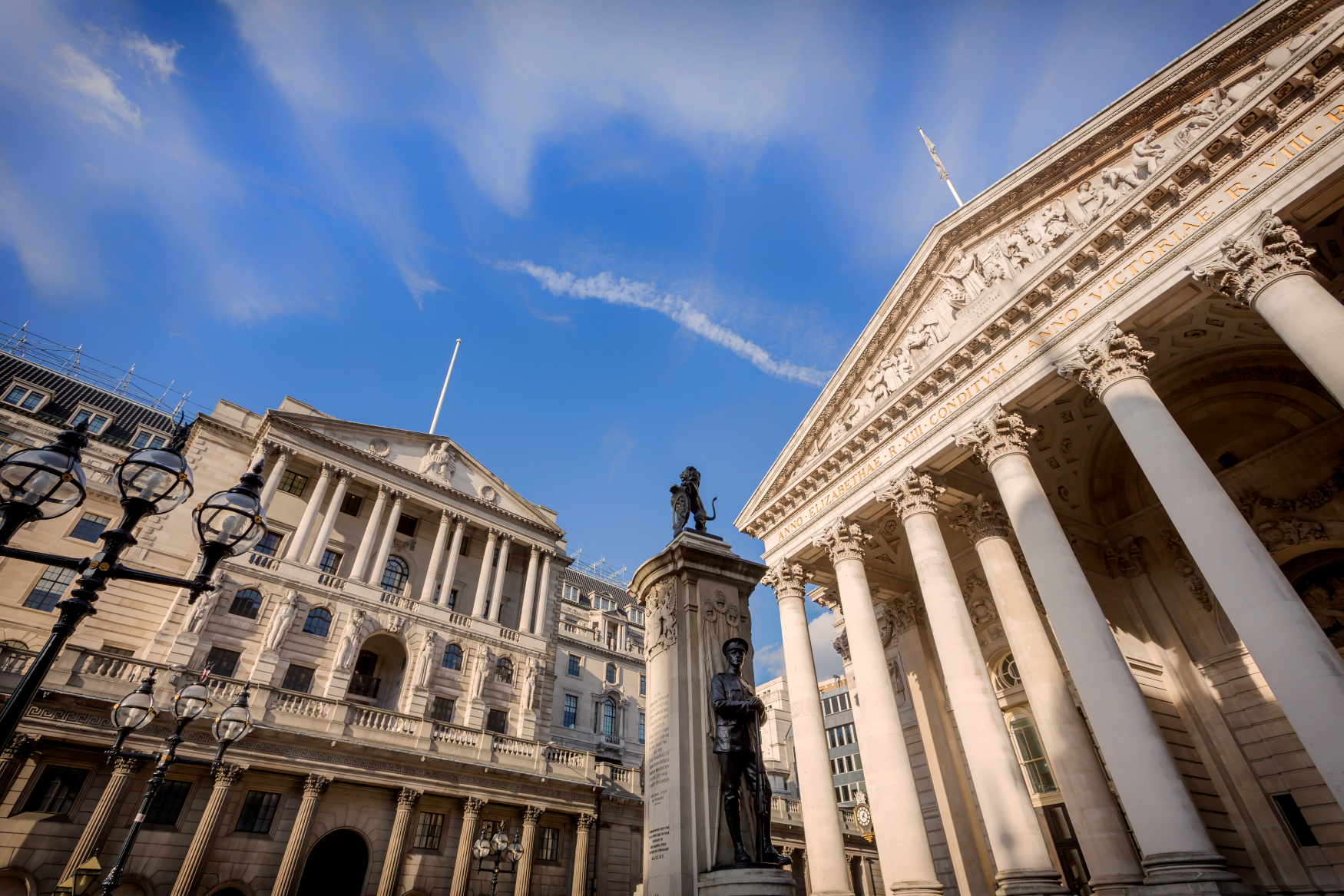Market outlook - Illiquid assets: a bridge over troubled waters?

Institutional investors have been increasing allocations to illiquid assets and Downing’s research suggests the trend is set to continue. In this market outlook, Kostas Manolis, Partner and Head of Private Market Investments, explains why the current economic conditions make illiquid assets attractive.
The recent economic turbulence that has gripped global markets has sent institutional investors searching for assets to hedge against inflation and help their portfolios weather the uncertainty.
In Downing’s recent survey of 100 UK institutional investors, 92% of respondents said they have increased their allocations to illiquid assets to hedge against inflation. There is no sign of that appetite declining: when asked about planned allocations for the coming year, all respondents were planning to increase investments in illiquid assets, in particular 45% said they planned an increase of between 10-25%.
The increasing attraction to illiquid assets stems mainly from the appeal of longer-term investments that promise higher expected returns and lower volatility. In response to our survey, 38% of institutions said the potential for long-term capital appreciation and higher returns, net of fees, was their number one reason for increasing their allocations next year.
The economic danger is not yet over

By some measures, the worst of the recent economic disruption appears to have passed. The slow-release medicine of high interest rates is starting to take effect and we can clearly see its impact on inflation. As inflation is easing, it looks likely that interest rates have reached their peak and the consensus expectation is for them to begin declining over the coming months, although it may take a long time for meaningful reductions to be seen.
By some measures, the worst of the recent economic disruption appears to have passed. The slow-release medicine of high interest rates is starting to take effect and we can clearly see its impact on inflation.
However, the effects of those higher rates are yet to play out in full and some economic indicators are already worrying. The Composite Purchasing Managers Index (PMI) was only just over the threshold of 50 that indicates growth in November, with the previous three months below that number. Unemployment has risen to its highest level since September 2021, and the rate of corporate insolvencies is rising to levels quite close to those during the Global Financial Crisis. It all points to danger ahead and the question is whether interest rates will reduce fast enough to avoid a hard landing for the economy. This all makes it more difficult to predict how public markets will perform over the next few years.
Uncertainty can also be seen in government bond markets with yields on ten-year UK gilts and US Treasury notes remaining high. Fears of inflation rising again are only partly to blame for this. Government interventions to defend against the pandemic have taken a toll on government borrowing with UK debt being already at record levels and above 100% of UK GDP.
The budget deficit is also high and is forecast to reach £124 billion for the current fiscal year. Pressures on government spending continue to be intense, and it looks like markets are expecting government demand for borrowing to remain high and for gilts to be in oversupply, which may also help explain the persistence of 10-year rates. Having said that, they have come off by circa 0.5% recently and this volatility is also affecting bond markets and helps make the case for the relatively more stable returns offered by private market investments.
Pressures on government spending continue to be intense, and it looks like markets are expecting government demand for borrowing to remain high and for gilts to be in oversupply
Public policy backing for illiquid investments
Another factor that will shape institutional allocations in the immediate future is the government’s push for UK institutions to invest more in the UK, in particular in private assets.
The Mansion House Reforms, announced by the Chancellor in July, were a powerful signal of intent. There is still a need for greater clarity on these reforms, but the direction of travel was explicit – more pension fund investment in UK businesses including unlisted illiquid assets. As UK pension funds are digesting the recommendations, they might find the AIM market a useful first step towards illiquid asset investment. Funds investing in AIM-listed companies will qualify towards the Mansion House targets and the attraction of that strategy was highlighted by some of my Downing colleagues in a recent webinar.
There is still a need for greater clarity on the Mansion House Reforms, but the direction of travel was explicit – more pension fund investment in UK businesses including unlisted illiquid assets.
The review of Solvency II rules by the relevant EU bodies (and by the Prudential Regulation Authority in the UK) is also likely to result in changes for insurers that will release more capital and incentivise investment in private markets.

More recently, the Chancellor’s autumn statement included a commitment to reviewing planning processes in the UK, particularly for infrastructure, and an action plan to accelerate the connection of renewable energy to the national grid. The planning process has long been an unwelcome hindrance to infrastructure investment and reform could unlock more opportunities.
The UK faces a general election in the coming year and a possible change of government, but Labour leader Keir Starmer has, if anything, been even more forceful in his calls for the planning process to be relaxed to allow faster infrastructure and property development.
Policy changes to encourage infrastructure investment will also help meet our energy transition needs. The energy price rises of the last two years may have hampered economic growth, but they have also helped make the case for investing in renewable energy to rebuild the UK’s energy security, as well as in the pursuit of net-zero targets.
Private credit stepping into the lending gap
The other asset class attracting attention is private credit, which has already expanded dramatically since the Global Financial Crisis, as banks responded to regulation by pulling in their horns and leaving a gap in credit provision.
Demand for credit is now rising from expanding businesses seeking capital and from companies that need to refinance loans taken out during the long period of low interest rates. At Downing, we are seeing excellent opportunities to invest in credit during this period of higher rates, while also securing tighter lending terms and higher returns.
One leading example of this has been our property finance business, which has committed half a billion pounds since 2017 for developments and bridging finance and is now seeing returns improve substantially without compromising credit quality.
Demand for credit is now rising from expanding businesses seeking capital and from companies that need to refinance loans taken out during the long period of low interest rates.
So what next?
While in many respects the economic turbulence is easing, the future remains far from clear and it is likely to take time for public market volatility to ease. Private markets are less affected by short-term market fluctuations, offer the potential for higher returns and are a great diversifier for investment portfolios. Considering these benefits, the appeal of private market assets is now stronger than ever.
If you would like to discuss any of the views within this article or sign up for our insights newsletter, please get in touch
Institutional investors have been increasing allocations to illiquid assets and Downing’s research suggests the trend is set to continue. In this market outlook, Kostas Manolis, Partner and Head of Private Market Investments, explains why the current economic conditions make illiquid assets attractive.
The recent economic turbulence that has gripped global markets has sent institutional investors searching for assets to hedge against inflation and help their portfolios weather the uncertainty.
In Downing’s recent survey of 100 UK institutional investors, 92% of respondents said they have increased their allocations to illiquid assets to hedge against inflation. There is no sign of that appetite declining: when asked about planned allocations for the coming year, all respondents were planning to increase investments in illiquid assets, in particular 45% said they planned an increase of between 10-25%.
The increasing attraction to illiquid assets stems mainly from the appeal of longer-term investments that promise higher expected returns and lower volatility. In response to our survey, 38% of institutions said the potential for long-term capital appreciation and higher returns, net of fees, was their number one reason for increasing their allocations next year.
The economic danger is not yet over

By some measures, the worst of the recent economic disruption appears to have passed. The slow-release medicine of high interest rates is starting to take effect and we can clearly see its impact on inflation. As inflation is easing, it looks likely that interest rates have reached their peak and the consensus expectation is for them to begin declining over the coming months, although it may take a long time for meaningful reductions to be seen.
By some measures, the worst of the recent economic disruption appears to have passed. The slow-release medicine of high interest rates is starting to take effect and we can clearly see its impact on inflation.
However, the effects of those higher rates are yet to play out in full and some economic indicators are already worrying. The Composite Purchasing Managers Index (PMI) was only just over the threshold of 50 that indicates growth in November, with the previous three months below that number. Unemployment has risen to its highest level since September 2021, and the rate of corporate insolvencies is rising to levels quite close to those during the Global Financial Crisis. It all points to danger ahead and the question is whether interest rates will reduce fast enough to avoid a hard landing for the economy. This all makes it more difficult to predict how public markets will perform over the next few years.
Uncertainty can also be seen in government bond markets with yields on ten-year UK gilts and US Treasury notes remaining high. Fears of inflation rising again are only partly to blame for this. Government interventions to defend against the pandemic have taken a toll on government borrowing with UK debt being already at record levels and above 100% of UK GDP.
The budget deficit is also high and is forecast to reach £124 billion for the current fiscal year. Pressures on government spending continue to be intense, and it looks like markets are expecting government demand for borrowing to remain high and for gilts to be in oversupply, which may also help explain the persistence of 10-year rates. Having said that, they have come off by circa 0.5% recently and this volatility is also affecting bond markets and helps make the case for the relatively more stable returns offered by private market investments.
Pressures on government spending continue to be intense, and it looks like markets are expecting government demand for borrowing to remain high and for gilts to be in oversupply
Public policy backing for illiquid investments
Another factor that will shape institutional allocations in the immediate future is the government’s push for UK institutions to invest more in the UK, in particular in private assets.
The Mansion House Reforms, announced by the Chancellor in July, were a powerful signal of intent. There is still a need for greater clarity on these reforms, but the direction of travel was explicit – more pension fund investment in UK businesses including unlisted illiquid assets. As UK pension funds are digesting the recommendations, they might find the AIM market a useful first step towards illiquid asset investment. Funds investing in AIM-listed companies will qualify towards the Mansion House targets and the attraction of that strategy was highlighted by some of my Downing colleagues in a recent webinar.
There is still a need for greater clarity on the Mansion House Reforms, but the direction of travel was explicit – more pension fund investment in UK businesses including unlisted illiquid assets.
The review of Solvency II rules by the relevant EU bodies (and by the Prudential Regulation Authority in the UK) is also likely to result in changes for insurers that will release more capital and incentivise investment in private markets.

More recently, the Chancellor’s autumn statement included a commitment to reviewing planning processes in the UK, particularly for infrastructure, and an action plan to accelerate the connection of renewable energy to the national grid. The planning process has long been an unwelcome hindrance to infrastructure investment and reform could unlock more opportunities.
The UK faces a general election in the coming year and a possible change of government, but Labour leader Keir Starmer has, if anything, been even more forceful in his calls for the planning process to be relaxed to allow faster infrastructure and property development.
Policy changes to encourage infrastructure investment will also help meet our energy transition needs. The energy price rises of the last two years may have hampered economic growth, but they have also helped make the case for investing in renewable energy to rebuild the UK’s energy security, as well as in the pursuit of net-zero targets.
Private credit stepping into the lending gap
The other asset class attracting attention is private credit, which has already expanded dramatically since the Global Financial Crisis, as banks responded to regulation by pulling in their horns and leaving a gap in credit provision.
Demand for credit is now rising from expanding businesses seeking capital and from companies that need to refinance loans taken out during the long period of low interest rates. At Downing, we are seeing excellent opportunities to invest in credit during this period of higher rates, while also securing tighter lending terms and higher returns.
One leading example of this has been our property finance business, which has committed half a billion pounds since 2017 for developments and bridging finance and is now seeing returns improve substantially without compromising credit quality.
Demand for credit is now rising from expanding businesses seeking capital and from companies that need to refinance loans taken out during the long period of low interest rates.
So what next?
While in many respects the economic turbulence is easing, the future remains far from clear and it is likely to take time for public market volatility to ease. Private markets are less affected by short-term market fluctuations, offer the potential for higher returns and are a great diversifier for investment portfolios. Considering these benefits, the appeal of private market assets is now stronger than ever.
If you would like to discuss any of the views within this article or sign up for our insights newsletter, please get in touch
Institutional investors have been increasing allocations to illiquid assets and Downing’s research suggests the trend is set to continue. In this market outlook, Kostas Manolis, Partner and Head of Private Market Investments, explains why the current economic conditions make illiquid assets attractive.
The recent economic turbulence that has gripped global markets has sent institutional investors searching for assets to hedge against inflation and help their portfolios weather the uncertainty.
In Downing’s recent survey of 100 UK institutional investors, 92% of respondents said they have increased their allocations to illiquid assets to hedge against inflation. There is no sign of that appetite declining: when asked about planned allocations for the coming year, all respondents were planning to increase investments in illiquid assets, in particular 45% said they planned an increase of between 10-25%.
The increasing attraction to illiquid assets stems mainly from the appeal of longer-term investments that promise higher expected returns and lower volatility. In response to our survey, 38% of institutions said the potential for long-term capital appreciation and higher returns, net of fees, was their number one reason for increasing their allocations next year.
The economic danger is not yet over

By some measures, the worst of the recent economic disruption appears to have passed. The slow-release medicine of high interest rates is starting to take effect and we can clearly see its impact on inflation. As inflation is easing, it looks likely that interest rates have reached their peak and the consensus expectation is for them to begin declining over the coming months, although it may take a long time for meaningful reductions to be seen.
By some measures, the worst of the recent economic disruption appears to have passed. The slow-release medicine of high interest rates is starting to take effect and we can clearly see its impact on inflation.
However, the effects of those higher rates are yet to play out in full and some economic indicators are already worrying. The Composite Purchasing Managers Index (PMI) was only just over the threshold of 50 that indicates growth in November, with the previous three months below that number. Unemployment has risen to its highest level since September 2021, and the rate of corporate insolvencies is rising to levels quite close to those during the Global Financial Crisis. It all points to danger ahead and the question is whether interest rates will reduce fast enough to avoid a hard landing for the economy. This all makes it more difficult to predict how public markets will perform over the next few years.
Uncertainty can also be seen in government bond markets with yields on ten-year UK gilts and US Treasury notes remaining high. Fears of inflation rising again are only partly to blame for this. Government interventions to defend against the pandemic have taken a toll on government borrowing with UK debt being already at record levels and above 100% of UK GDP.
The budget deficit is also high and is forecast to reach £124 billion for the current fiscal year. Pressures on government spending continue to be intense, and it looks like markets are expecting government demand for borrowing to remain high and for gilts to be in oversupply, which may also help explain the persistence of 10-year rates. Having said that, they have come off by circa 0.5% recently and this volatility is also affecting bond markets and helps make the case for the relatively more stable returns offered by private market investments.
Pressures on government spending continue to be intense, and it looks like markets are expecting government demand for borrowing to remain high and for gilts to be in oversupply
Public policy backing for illiquid investments
Another factor that will shape institutional allocations in the immediate future is the government’s push for UK institutions to invest more in the UK, in particular in private assets.
The Mansion House Reforms, announced by the Chancellor in July, were a powerful signal of intent. There is still a need for greater clarity on these reforms, but the direction of travel was explicit – more pension fund investment in UK businesses including unlisted illiquid assets. As UK pension funds are digesting the recommendations, they might find the AIM market a useful first step towards illiquid asset investment. Funds investing in AIM-listed companies will qualify towards the Mansion House targets and the attraction of that strategy was highlighted by some of my Downing colleagues in a recent webinar.
There is still a need for greater clarity on the Mansion House Reforms, but the direction of travel was explicit – more pension fund investment in UK businesses including unlisted illiquid assets.
The review of Solvency II rules by the relevant EU bodies (and by the Prudential Regulation Authority in the UK) is also likely to result in changes for insurers that will release more capital and incentivise investment in private markets.

More recently, the Chancellor’s autumn statement included a commitment to reviewing planning processes in the UK, particularly for infrastructure, and an action plan to accelerate the connection of renewable energy to the national grid. The planning process has long been an unwelcome hindrance to infrastructure investment and reform could unlock more opportunities.
The UK faces a general election in the coming year and a possible change of government, but Labour leader Keir Starmer has, if anything, been even more forceful in his calls for the planning process to be relaxed to allow faster infrastructure and property development.
Policy changes to encourage infrastructure investment will also help meet our energy transition needs. The energy price rises of the last two years may have hampered economic growth, but they have also helped make the case for investing in renewable energy to rebuild the UK’s energy security, as well as in the pursuit of net-zero targets.
Private credit stepping into the lending gap
The other asset class attracting attention is private credit, which has already expanded dramatically since the Global Financial Crisis, as banks responded to regulation by pulling in their horns and leaving a gap in credit provision.
Demand for credit is now rising from expanding businesses seeking capital and from companies that need to refinance loans taken out during the long period of low interest rates. At Downing, we are seeing excellent opportunities to invest in credit during this period of higher rates, while also securing tighter lending terms and higher returns.
One leading example of this has been our property finance business, which has committed half a billion pounds since 2017 for developments and bridging finance and is now seeing returns improve substantially without compromising credit quality.
Demand for credit is now rising from expanding businesses seeking capital and from companies that need to refinance loans taken out during the long period of low interest rates.
So what next?
While in many respects the economic turbulence is easing, the future remains far from clear and it is likely to take time for public market volatility to ease. Private markets are less affected by short-term market fluctuations, offer the potential for higher returns and are a great diversifier for investment portfolios. Considering these benefits, the appeal of private market assets is now stronger than ever.
If you would like to discuss any of the views within this article or sign up for our insights newsletter, please get in touch
Institutional investors have been increasing allocations to illiquid assets and Downing’s research suggests the trend is set to continue. In this market outlook, Kostas Manolis, Partner and Head of Private Market Investments, explains why the current economic conditions make illiquid assets attractive.
The recent economic turbulence that has gripped global markets has sent institutional investors searching for assets to hedge against inflation and help their portfolios weather the uncertainty.
In Downing’s recent survey of 100 UK institutional investors, 92% of respondents said they have increased their allocations to illiquid assets to hedge against inflation. There is no sign of that appetite declining: when asked about planned allocations for the coming year, all respondents were planning to increase investments in illiquid assets, in particular 45% said they planned an increase of between 10-25%.
The increasing attraction to illiquid assets stems mainly from the appeal of longer-term investments that promise higher expected returns and lower volatility. In response to our survey, 38% of institutions said the potential for long-term capital appreciation and higher returns, net of fees, was their number one reason for increasing their allocations next year.
The economic danger is not yet over

By some measures, the worst of the recent economic disruption appears to have passed. The slow-release medicine of high interest rates is starting to take effect and we can clearly see its impact on inflation. As inflation is easing, it looks likely that interest rates have reached their peak and the consensus expectation is for them to begin declining over the coming months, although it may take a long time for meaningful reductions to be seen.
By some measures, the worst of the recent economic disruption appears to have passed. The slow-release medicine of high interest rates is starting to take effect and we can clearly see its impact on inflation.
However, the effects of those higher rates are yet to play out in full and some economic indicators are already worrying. The Composite Purchasing Managers Index (PMI) was only just over the threshold of 50 that indicates growth in November, with the previous three months below that number. Unemployment has risen to its highest level since September 2021, and the rate of corporate insolvencies is rising to levels quite close to those during the Global Financial Crisis. It all points to danger ahead and the question is whether interest rates will reduce fast enough to avoid a hard landing for the economy. This all makes it more difficult to predict how public markets will perform over the next few years.
Uncertainty can also be seen in government bond markets with yields on ten-year UK gilts and US Treasury notes remaining high. Fears of inflation rising again are only partly to blame for this. Government interventions to defend against the pandemic have taken a toll on government borrowing with UK debt being already at record levels and above 100% of UK GDP.
The budget deficit is also high and is forecast to reach £124 billion for the current fiscal year. Pressures on government spending continue to be intense, and it looks like markets are expecting government demand for borrowing to remain high and for gilts to be in oversupply, which may also help explain the persistence of 10-year rates. Having said that, they have come off by circa 0.5% recently and this volatility is also affecting bond markets and helps make the case for the relatively more stable returns offered by private market investments.
Pressures on government spending continue to be intense, and it looks like markets are expecting government demand for borrowing to remain high and for gilts to be in oversupply
Public policy backing for illiquid investments
Another factor that will shape institutional allocations in the immediate future is the government’s push for UK institutions to invest more in the UK, in particular in private assets.
The Mansion House Reforms, announced by the Chancellor in July, were a powerful signal of intent. There is still a need for greater clarity on these reforms, but the direction of travel was explicit – more pension fund investment in UK businesses including unlisted illiquid assets. As UK pension funds are digesting the recommendations, they might find the AIM market a useful first step towards illiquid asset investment. Funds investing in AIM-listed companies will qualify towards the Mansion House targets and the attraction of that strategy was highlighted by some of my Downing colleagues in a recent webinar.
There is still a need for greater clarity on the Mansion House Reforms, but the direction of travel was explicit – more pension fund investment in UK businesses including unlisted illiquid assets.
The review of Solvency II rules by the relevant EU bodies (and by the Prudential Regulation Authority in the UK) is also likely to result in changes for insurers that will release more capital and incentivise investment in private markets.

More recently, the Chancellor’s autumn statement included a commitment to reviewing planning processes in the UK, particularly for infrastructure, and an action plan to accelerate the connection of renewable energy to the national grid. The planning process has long been an unwelcome hindrance to infrastructure investment and reform could unlock more opportunities.
The UK faces a general election in the coming year and a possible change of government, but Labour leader Keir Starmer has, if anything, been even more forceful in his calls for the planning process to be relaxed to allow faster infrastructure and property development.
Policy changes to encourage infrastructure investment will also help meet our energy transition needs. The energy price rises of the last two years may have hampered economic growth, but they have also helped make the case for investing in renewable energy to rebuild the UK’s energy security, as well as in the pursuit of net-zero targets.
Private credit stepping into the lending gap
The other asset class attracting attention is private credit, which has already expanded dramatically since the Global Financial Crisis, as banks responded to regulation by pulling in their horns and leaving a gap in credit provision.
Demand for credit is now rising from expanding businesses seeking capital and from companies that need to refinance loans taken out during the long period of low interest rates. At Downing, we are seeing excellent opportunities to invest in credit during this period of higher rates, while also securing tighter lending terms and higher returns.
One leading example of this has been our property finance business, which has committed half a billion pounds since 2017 for developments and bridging finance and is now seeing returns improve substantially without compromising credit quality.
Demand for credit is now rising from expanding businesses seeking capital and from companies that need to refinance loans taken out during the long period of low interest rates.
So what next?
While in many respects the economic turbulence is easing, the future remains far from clear and it is likely to take time for public market volatility to ease. Private markets are less affected by short-term market fluctuations, offer the potential for higher returns and are a great diversifier for investment portfolios. Considering these benefits, the appeal of private market assets is now stronger than ever.
If you would like to discuss any of the views within this article or sign up for our insights newsletter, please get in touch

Please fill out the form to download the full report
Downing LLP does not provide advice or make personal recommendations and investors are strongly urged to seek independent advice before investing. Investments offered on this website carry a higher risk than many other types of investment and prospective investors should be aware that capital is at risk and the value of their investment may go down as well as up. Any investment should only be made on the basis of the relevant product literature and your attention is drawn to the risk, fees and taxation factors contained therein. Tax treatment depends on individual circumstances of each investor and may be subject to change in the future. Past performance is not a reliable indicator of future performance. Downing LLP is authorised and regulated by the Financial Conduct Authority (Firm Reference Number 545025). Registered in England No. OC341575. Registered Office: Downing, 10 Lower Thames Street, London, EC3R 6AF.


.jpeg)



.jpg)


